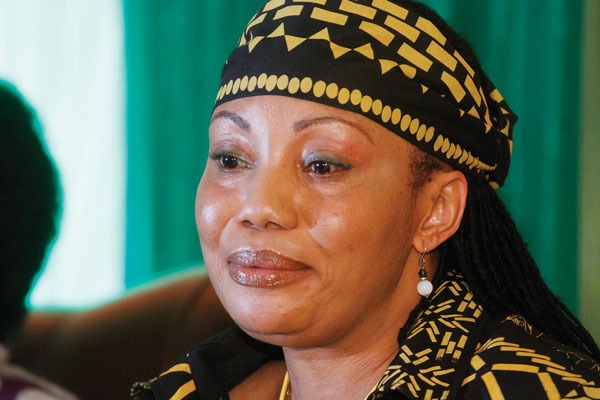In our Election Watch 1/2023 of the 5th January we reported that the Chairperson of the Zimbabwe Electoral Commission [ZEC] had presented a preliminary delimitation report to the President on the 26th December and that he had summoned Parliament to receive the report on the 6th January. Since then the report has been laid before the Senate and the National Assembly, and both Houses have appointed an ad hoc committee to analyse it and report back next Friday, the 13th January.
The preliminary delimitation report itself has been issued in soft copy and can be accessed on the Veritas website .
In this bulletin we shall set out in more detail what happened in Parliament and then go on to consider a fatal flaw in the report itself.
Parliament Receives the Preliminary Report
Both Houses of Parliament met on the 6th January and the Minister of Justice, Legal and Parliamentary Affairs presented the report to each of them. Both Houses then proceeded to appoint an ad hoc 13-member committee to consider and analyse the report and to report back to Parliament this coming Friday, the 13th January. The members of the committee are:
· Hon. P. Togarepi [ZANU-PF] [Chairperson]
· Hon. C. Madiwa [ZANU-PF]
· Hon. C. Mpame [ZANU-PF]
· Hon. K. Musanhi [ZANU-PF]
· Hon. Sen. T. V. Muzenda [ZANU-PF]
· Hon. Sen. D. Mwonzora [MDC-A]
· Hon. M. Ncube [ZANU-PF]
· Hon. A. Ndebele [MDC-A]
· Hon. D. Nduna [ZANU-PF]
· Hon. Sen. D. P. Parirenyatwa [ZANU-PF]
· Hon. Sen. Chief Siansali
· Hon. P. D. Sibanda [ZANU-PF]
· Hon. D. Tekeshe [MDC-A].
After receiving the committee’s analysis, both Houses are due to debate the preliminary delimitation report on the 7th and 18th January, and will then present their recommendations to the President on the 19th.
No doubt the ad hoc committee will investigate allegations made in the press that some of the proposed constituency boundaries have been gerrymandered so that voters of a particular political persuasion are in the majority. The committee will also probably look into whether there is any truth in allegations that all commissioners did not in fact sign off on the report.
But more seriously the delimitation exercise seems to be based on some provisions of the old Lancaster House rather than on the provisions of our current Constitution – thus rendering the whole exercise unconstitutional.
The Fatal Flaw : Excessive Variation in Numbers of Voters
The number of voters in the constituencies and wards vary by more than the 20 per cent limit prescribed in section 161 of the current Constitution. The variations are so great and so numerous that the delimitation itself is invalid.
According to section 161(3) of the Constitution ZEC must ensure that so far as possible equal numbers of voters are registered in each constituency throughout Zimbabwe; section 161(4) makes a similar provision for ward boundaries – the boundaries of wards must be such that so far as possible equal numbers of voters are registered in each ward of a local authority area. Obviously the Commission cannot ensure complete equality, so section 161(6) of the Constitution goes on to say that:
“… the Commission may depart from the requirement that constituencies and wards must have equal numbers of voters, but no constituency or ward of [a] local authority may have more than twenty per cent more or fewer registered voters than the other … constituencies or wards.”
In other words, the numbers of voters in constituencies and wards can vary by up to 20 per cent but no more.
ZEC has sought to give effect to this by allowing constituencies and wards to vary by up to 20 per cent above and 20 per cent below the average. The Commission explains this at page 11 of the report:
“In order to determine the voter population thresholds permissible in line with section 161(6) of the Constitution, the total number of registered voters at the national level was divided by 210 constituencies resulting in a national average of 27 640 voters per constituency. A twenty per cent variance from the national average was then determined resulting in a maximum registered voter threshold of 33 169 and a minimum threshold of 22 112 voters. Thus, any such constituency delimited was expected to fall within the minimum and maximum thresholds.”
What ZEC has done is to take the average number of voters per constituency (27 640) and then calculate the number of voters that would be 20 per cent above that average (33 169) and the number that is 20 per cent below the average (22 112), allowing a difference of up to 40%. This formula however means that the difference between the maximum number of voters and the minimum is much more than 20 per cent, which is not allowed by section 161(6) of the Constitution.
ZEC may have been led into error by the fact that the old Lancaster House constitution allowed constituencies to vary according to the formula that ZEC has adopted. Section 61A(6) of that Constitution stated:
“(6) In dividing Zimbabwe into wards and House of Assembly constituencies the Zimbabwe Electoral Commission … may depart from the requirements of subsection (4) [which required voter numbers to be equal], but in no case to any greater extent than twenty per centum more or less than the average number of registered voters in House of Assembly constituencies.”
That formula allowed constituencies to vary by more than 20 per cent so long as they were no more than 20 per cent above or 20% below the average. The present Constitution does not allow this. The number of voters cannot vary by more than 20 per cent between any constituencies.
What ZEC should have done was to calculate the average number of voters per constituency (27 640), then work out the number of voters 10 per cent above that average (30 404) and the number 10 per cent below (24 876). These latter two numbers vary by about 19 per cent, which is within the permissible limit. ZEC should then have ensured that no constituency had more than 30 404 voters and none had fewer than 24 876.
The same formula should have been adopted for wards in each local authority area.
As it is, many of the constituencies delimited by ZEC fall outside the permissible limits. For example, in Bulawayo Metropolitan Province the constituencies of Bulawayo Central (22 115 voters) and Bulawayo North (22 125) are well below the minimum 24 876 limit. Conversely, in Harare Metropolitan Province the constituencies of Churu (33 001 voters) and Harare East (33 103) are well above the maximum. These are only a few examples: all the Bulawayo constituencies are below the limit and most of the Harare constituencies are above it. And there are very many similar cases in the other provinces.
Effect of the flaw
The effect of ZEC’s misconstruction of section 161 of the Constitution is to invalidate the preliminary delimitation report. The proposed electoral boundaries set out in the report contravene section 161(6) so an election held on the basis of those boundaries cannot be held in accordance with the Constitution.
It might have been different if only one or two constituencies exceeded or fell below the permissible voter number limits, but the variations are so numerous and so great that the entire delimitation must be regarded as fatally flawed and unconstitutional. The preliminary report is a nullity.
What is to be Done?
Time is very short for the mistake to be rectified.
We said in our Election Watch 1/2023 that the delimitation report must be published by the 28th January if the newly delimited constituency and ward boundaries are to apply in the general election due to be held this year. That statement needs to be qualified slightly.
According to section 161(2) of the Constitution the delimitation must be completed – i.e. the delimitation report must be published – at least six months before polling day in a general election if the new electoral boundaries are to be used for that election.
Polling day in the 2023 general election will have to be:
· at the earliest, on the 28th July 2023 – see section 158(1)(a) of the Constitution and our Election Watch 3/2022 of the 19th September 2022 [link]
· at the latest, when Parliament’s term comes to an end on the 26th August 2023 – see that Election Watch.
If polling day is fixed at the latest date, the 26th August, the delimitation report would need to be published by the 26th February to allow the necessary six months to elapse between the completion of delimitation and polling day. Hence, if the 2023 general election is held on the last possible day, a corrected delimitation report will have to be published by the 26th February.
Can ZEC meet this deadline? The necessary groundwork has presumably been completed so that ZEC has worked out where voters live throughout the country. ZEC may therefore be able to shuffle constituency and ward boundaries around so as to bring them into conformity with the Constitution in time for the final report to be published by the 26th February deadline. On the other hand, the corrected report will probably have to be resubmitted to the President and Parliament because, as we have said, the present report is so flawed that it is a nullity – arguably, no valid preliminary report has yet been submitted to Parliament for its consideration.
And, as we have said, time is very short.
Conclusion
All this would probably have been avoided if ZEC had been more open in its conduct of the delimitation exercise. If political parties and civil society had been consulted about what ZEC proposed to do and had been kept abreast of developments at each stage of the exercise, someone would probably have pointed out that the proposed way of calculating variances between constituencies and wards was unconstitutional.
Veritas













